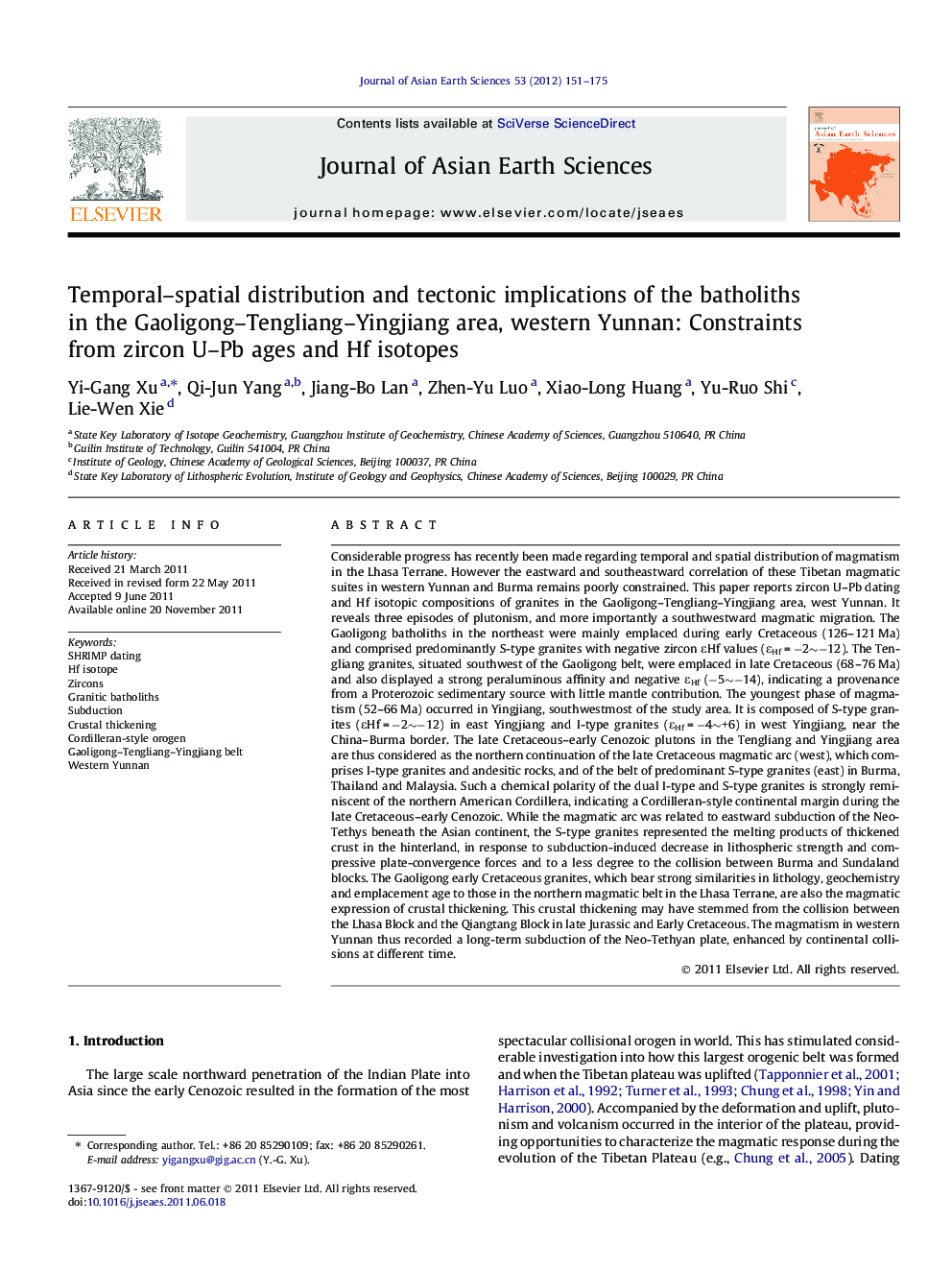| کد مقاله | کد نشریه | سال انتشار | مقاله انگلیسی | نسخه تمام متن |
|---|---|---|---|---|
| 4731387 | 1640411 | 2012 | 25 صفحه PDF | دانلود رایگان |

Considerable progress has recently been made regarding temporal and spatial distribution of magmatism in the Lhasa Terrane. However the eastward and southeastward correlation of these Tibetan magmatic suites in western Yunnan and Burma remains poorly constrained. This paper reports zircon U–Pb dating and Hf isotopic compositions of granites in the Gaoligong–Tengliang–Yingjiang area, west Yunnan. It reveals three episodes of plutonism, and more importantly a southwestward magmatic migration. The Gaoligong batholiths in the northeast were mainly emplaced during early Cretaceous (126–121 Ma) and comprised predominantly S-type granites with negative zircon εHf values (εHf = −2∼−12). The Tengliang granites, situated southwest of the Gaoligong belt, were emplaced in late Cretaceous (68–76 Ma) and also displayed a strong peraluminous affinity and negative εHf (−5∼−14), indicating a provenance from a Proterozoic sedimentary source with little mantle contribution. The youngest phase of magmatism (52–66 Ma) occurred in Yingjiang, southwestmost of the study area. It is composed of S-type granites (εHf = −2∼−12) in east Yingjiang and I-type granites (εHf = −4∼+6) in west Yingjiang, near the China–Burma border. The late Cretaceous–early Cenozoic plutons in the Tengliang and Yingjiang area are thus considered as the northern continuation of the late Cretaceous magmatic arc (west), which comprises I-type granites and andesitic rocks, and of the belt of predominant S-type granites (east) in Burma, Thailand and Malaysia. Such a chemical polarity of the dual I-type and S-type granites is strongly reminiscent of the northern American Cordillera, indicating a Cordilleran-style continental margin during the late Cretaceous–early Cenozoic. While the magmatic arc was related to eastward subduction of the Neo-Tethys beneath the Asian continent, the S-type granites represented the melting products of thickened crust in the hinterland, in response to subduction-induced decrease in lithospheric strength and compressive plate-convergence forces and to a less degree to the collision between Burma and Sundaland blocks. The Gaoligong early Cretaceous granites, which bear strong similarities in lithology, geochemistry and emplacement age to those in the northern magmatic belt in the Lhasa Terrane, are also the magmatic expression of crustal thickening. This crustal thickening may have stemmed from the collision between the Lhasa Block and the Qiangtang Block in late Jurassic and Early Cretaceous. The magmatism in western Yunnan thus recorded a long-term subduction of the Neo-Tethyan plate, enhanced by continental collisions at different time.
► Three episodes of plutonism are revealed in west Yunnan.
► Zircon U–Pb dating shows a southwestward magmatic migration.
► There is a chemical polarity with I-type granites in west and S-type in east.
► A Cordillera style continental margin is suggested for west Yunnan.
Journal: Journal of Asian Earth Sciences - Volume 53, 7 July 2012, Pages 151–175